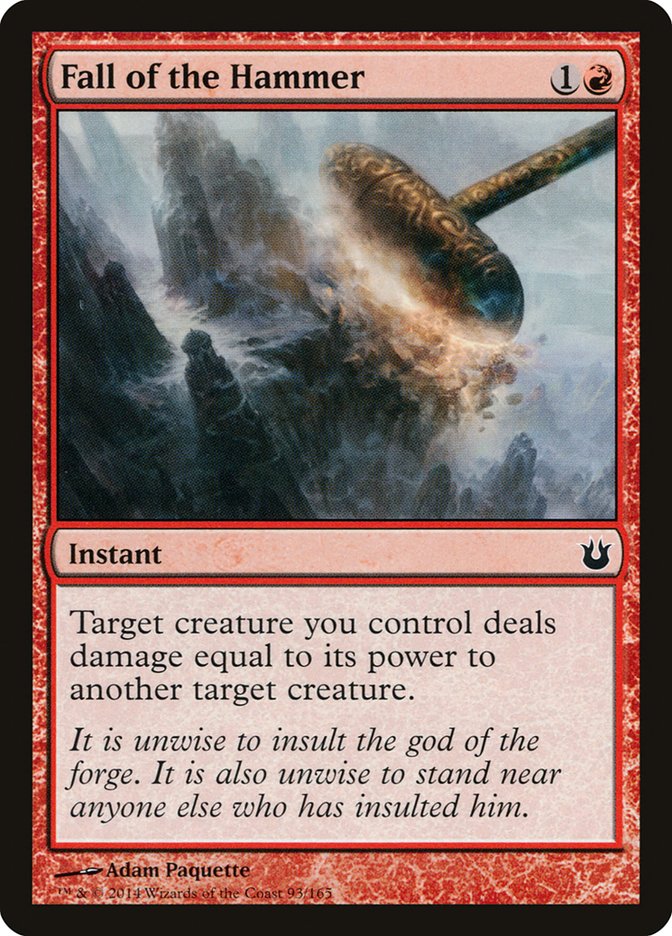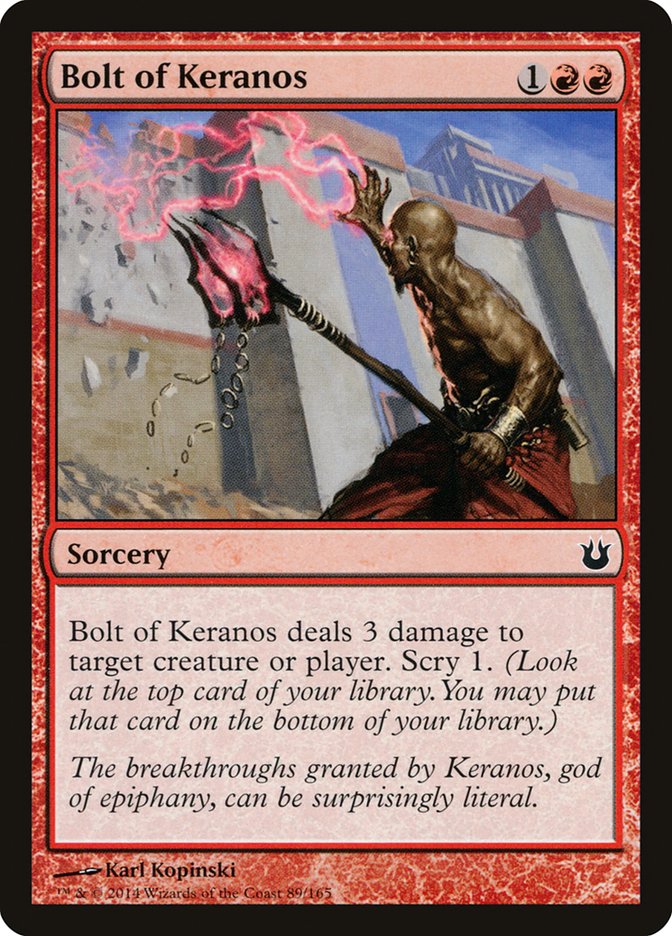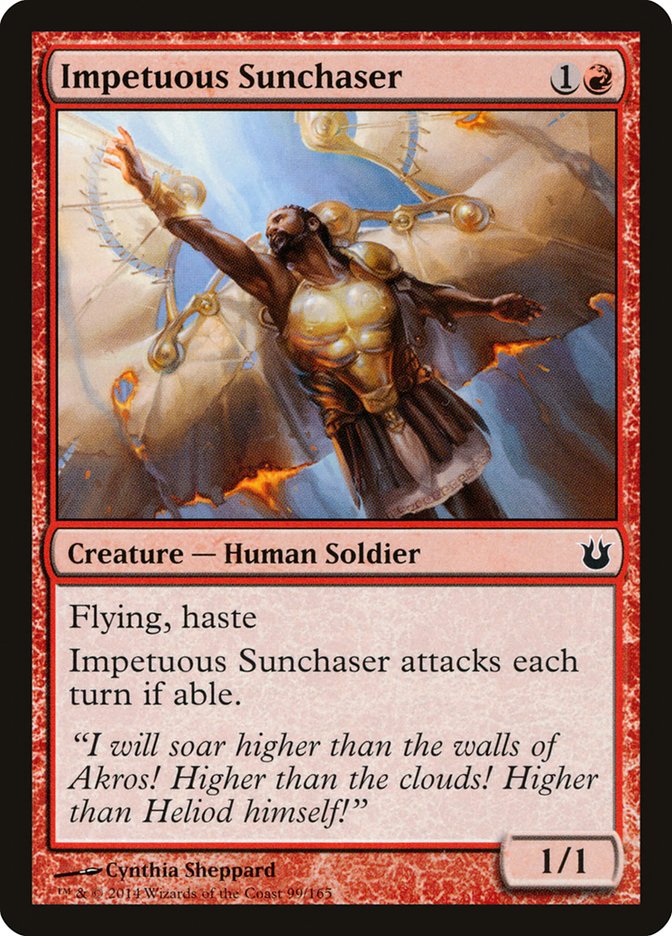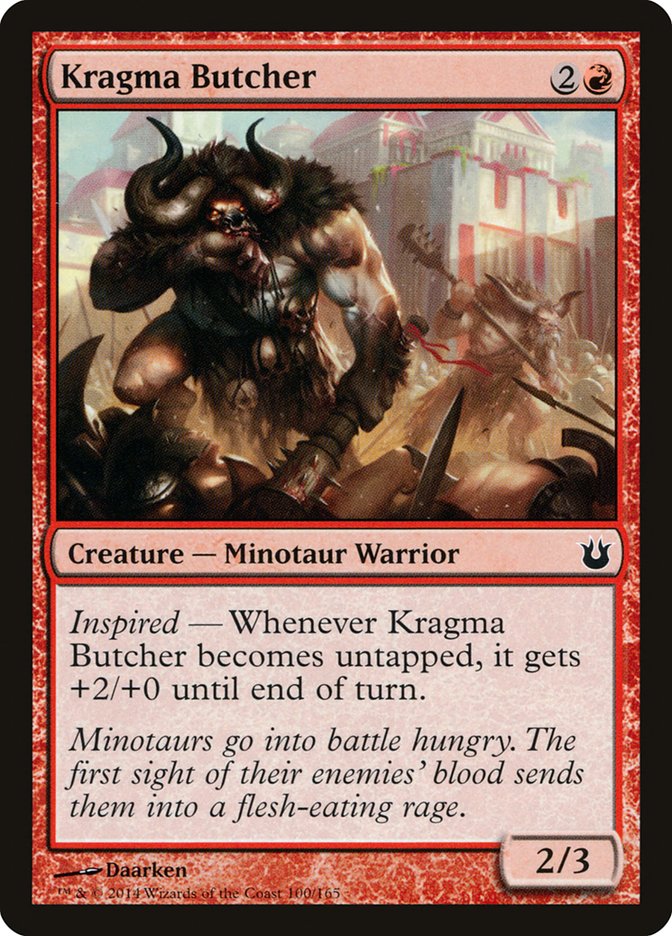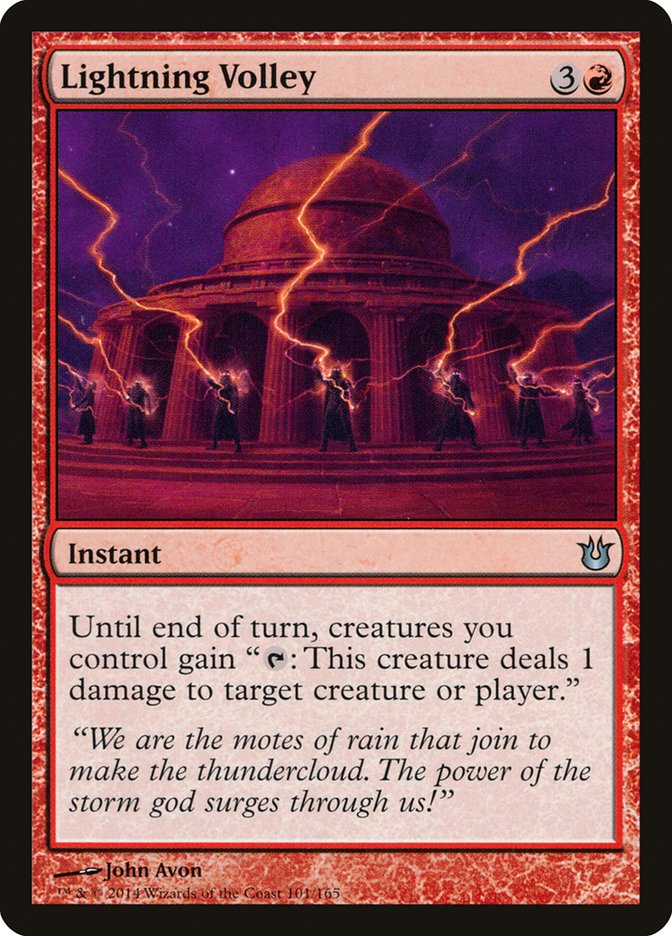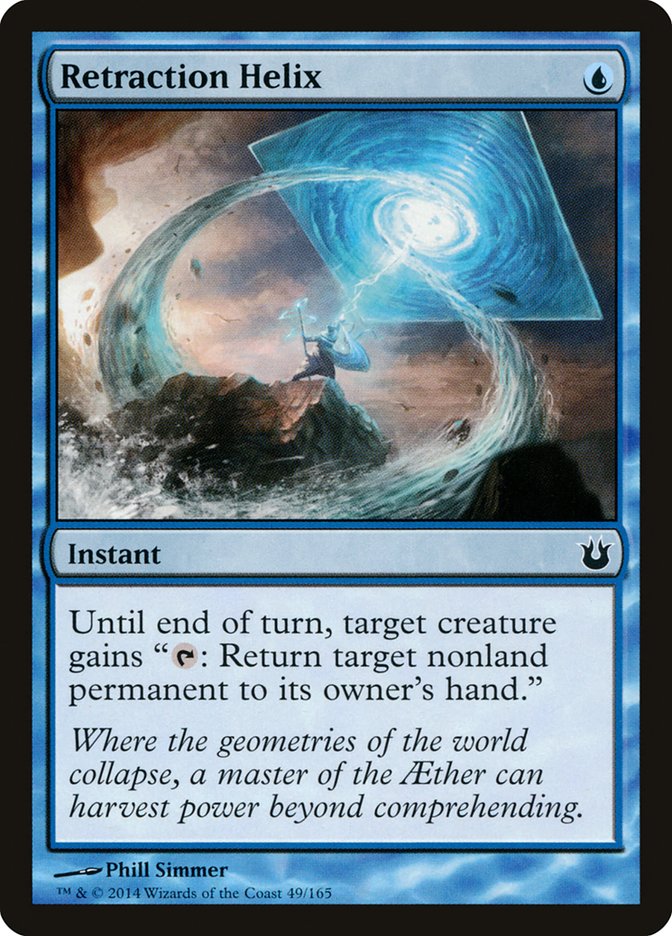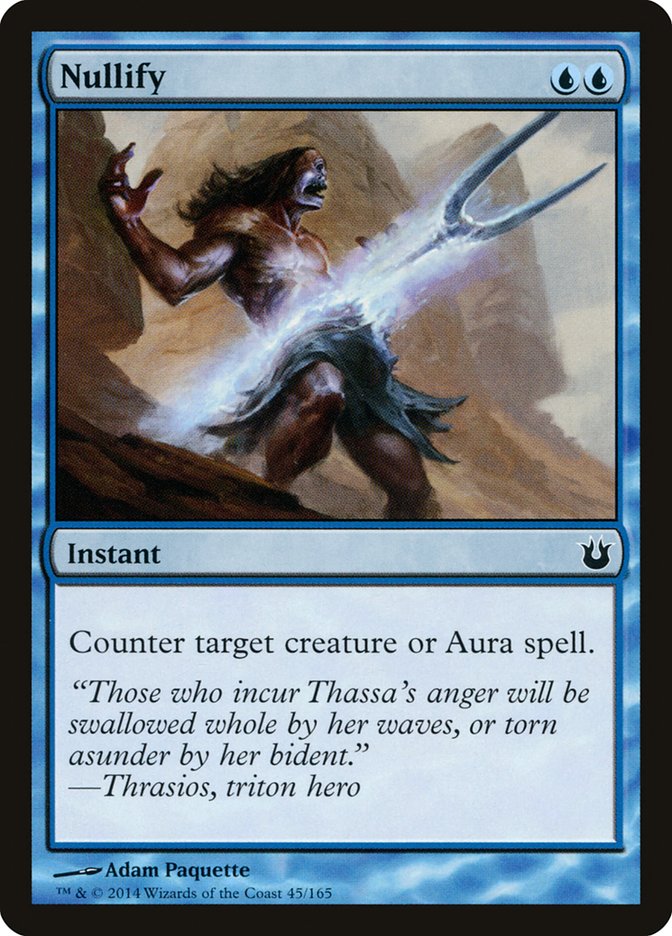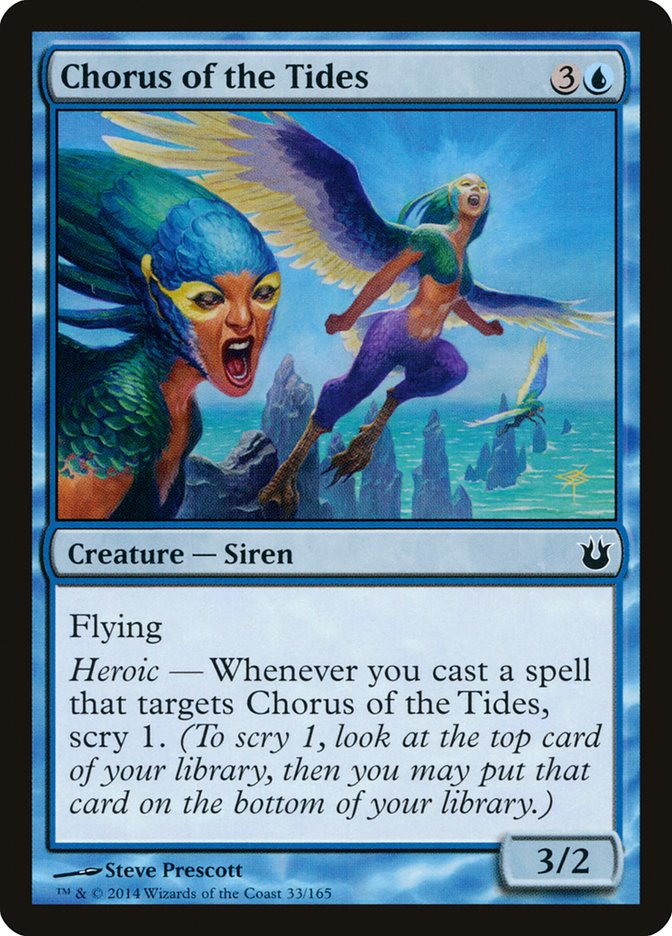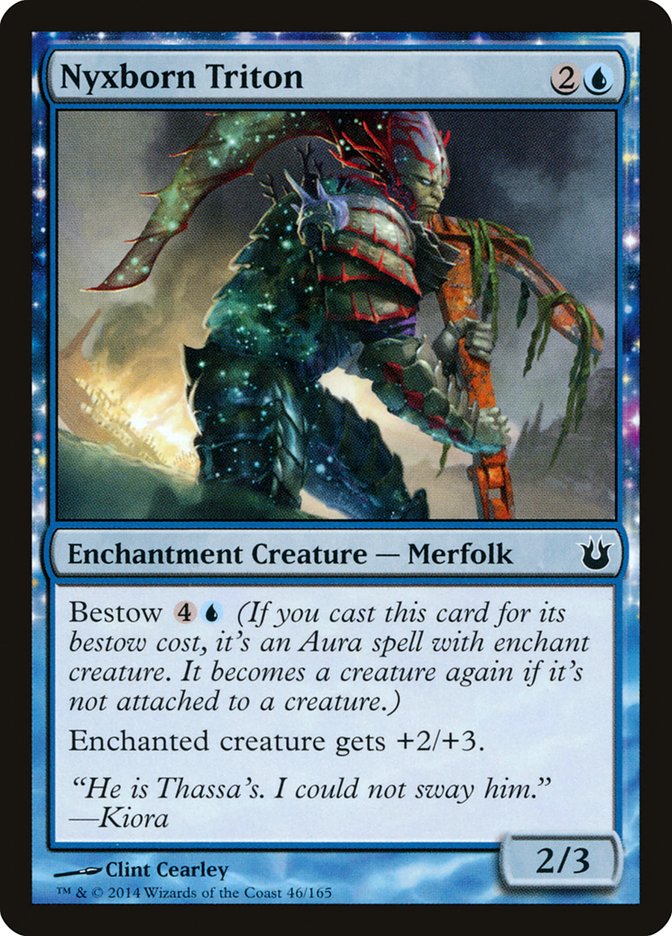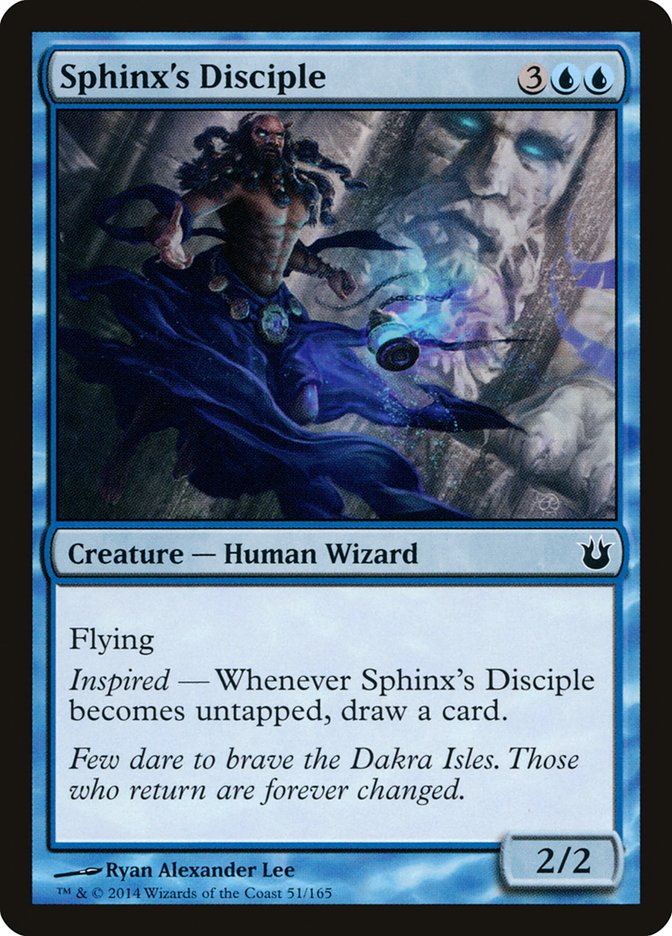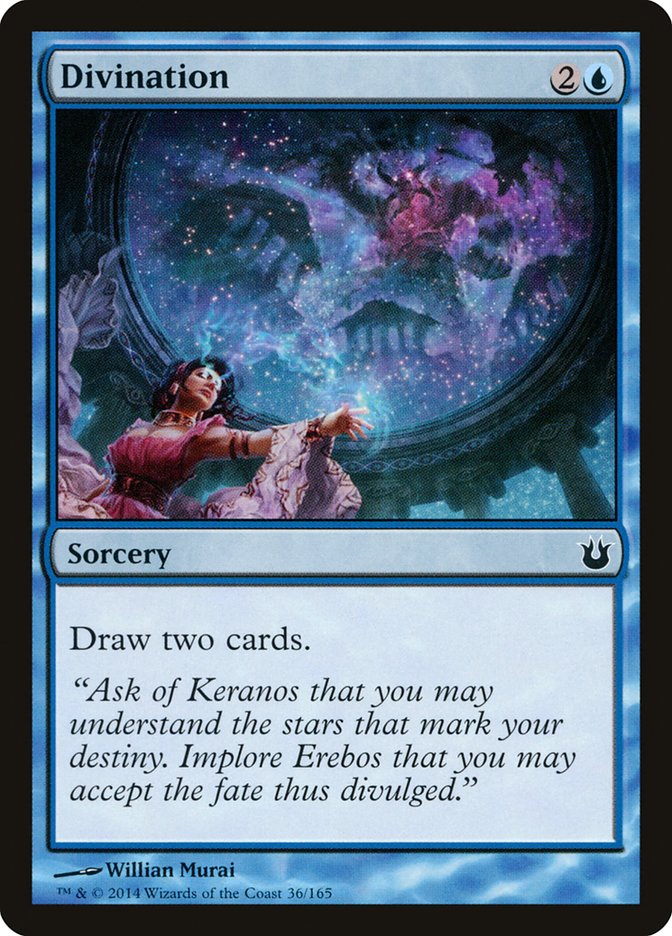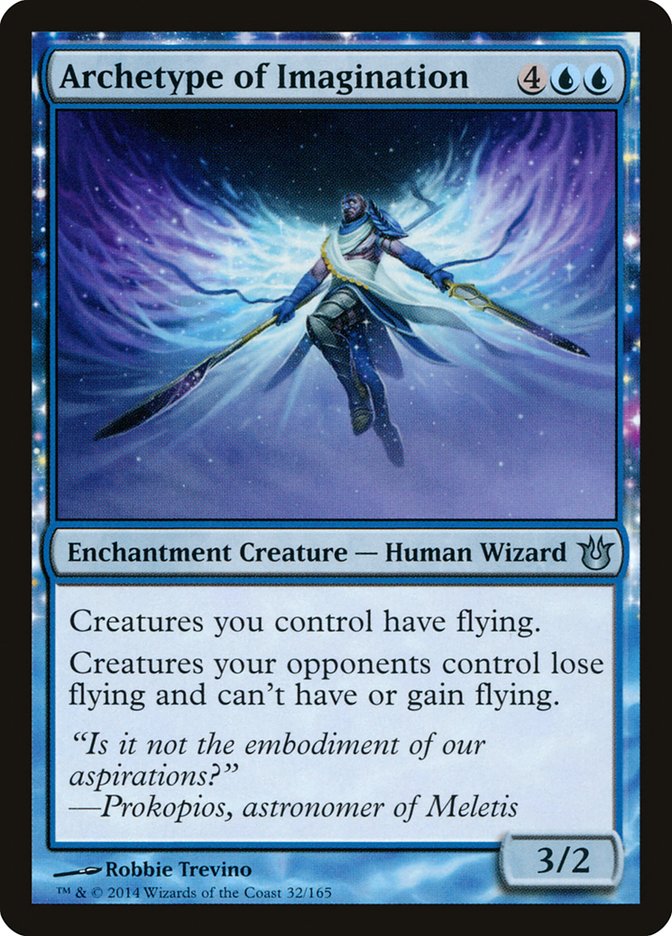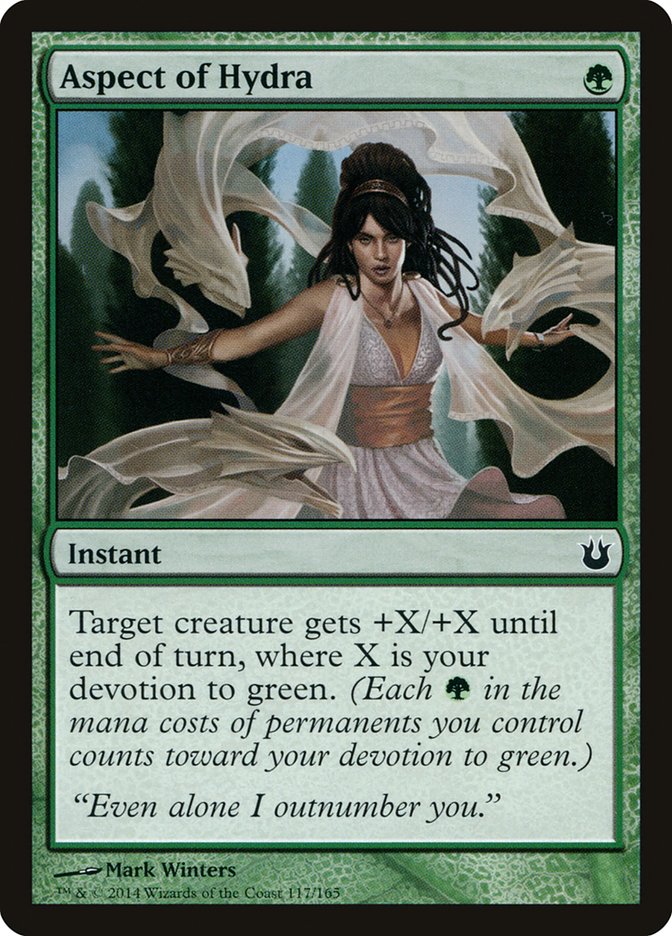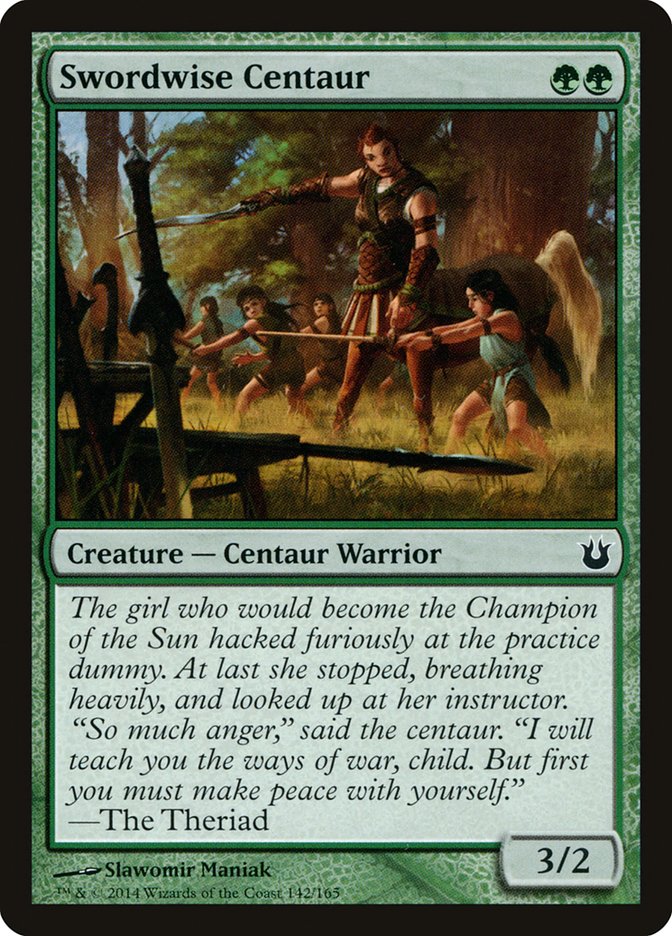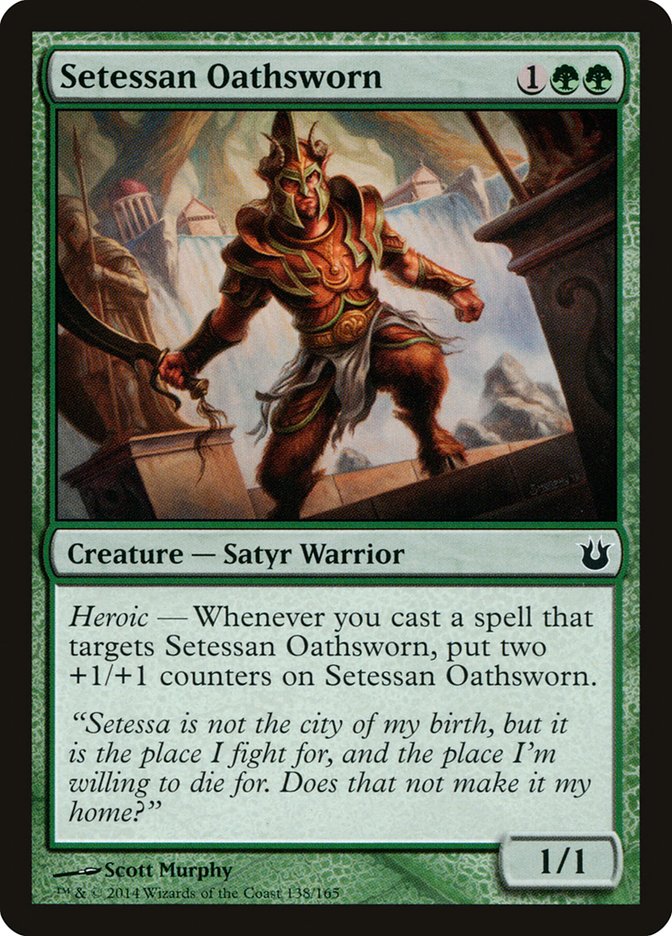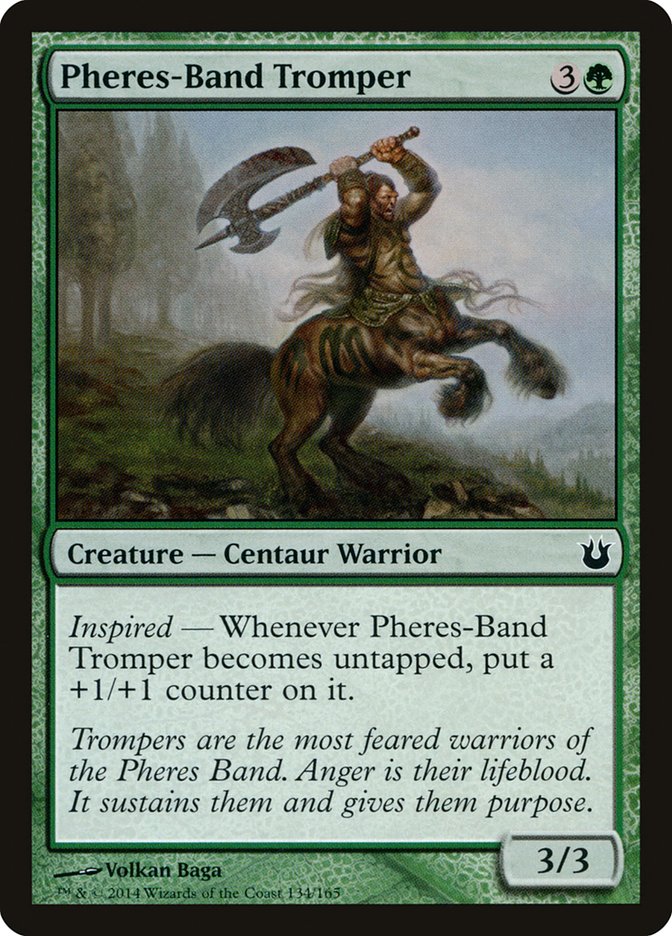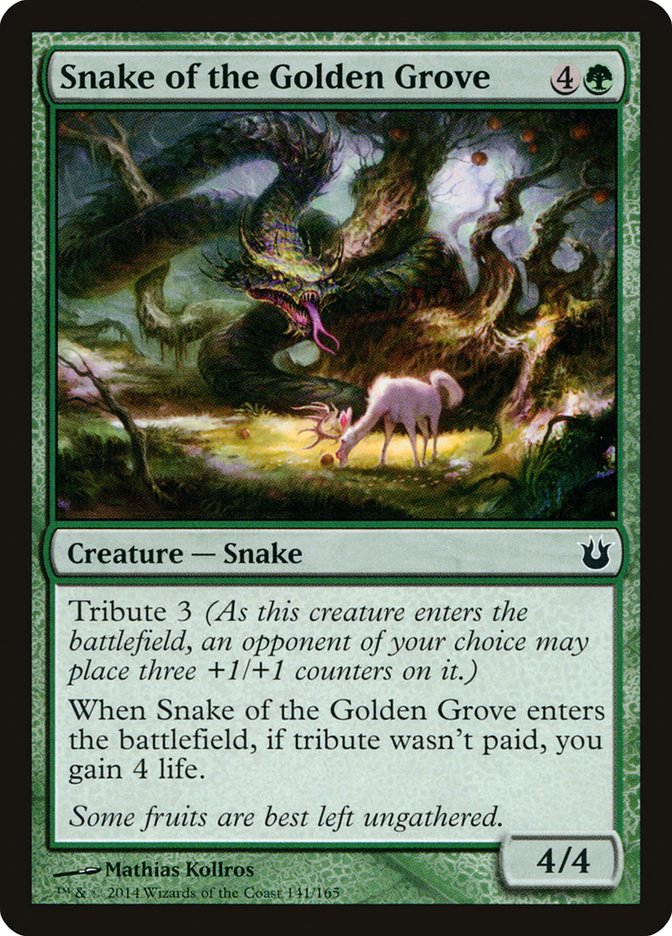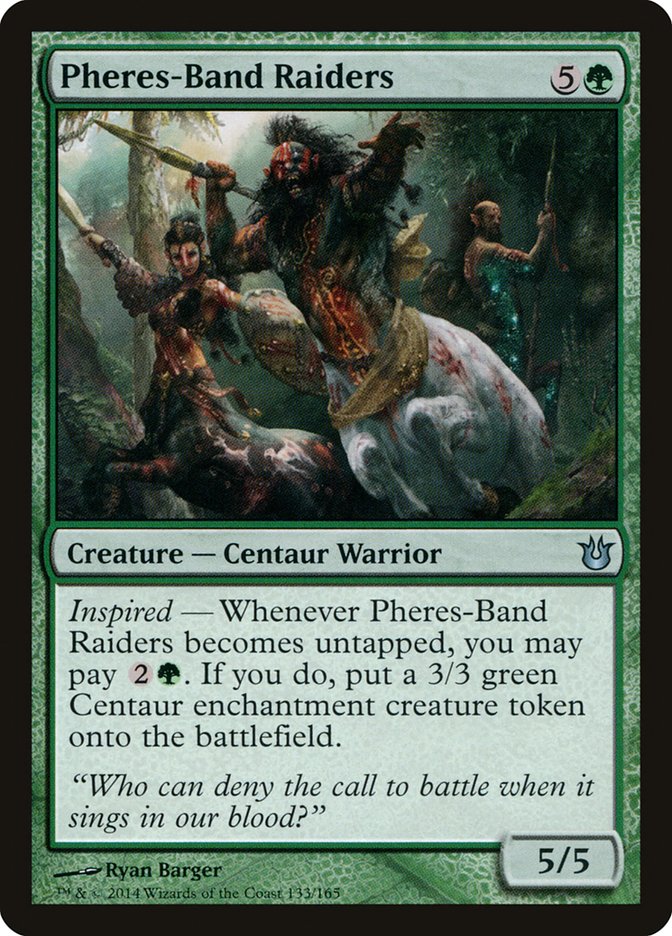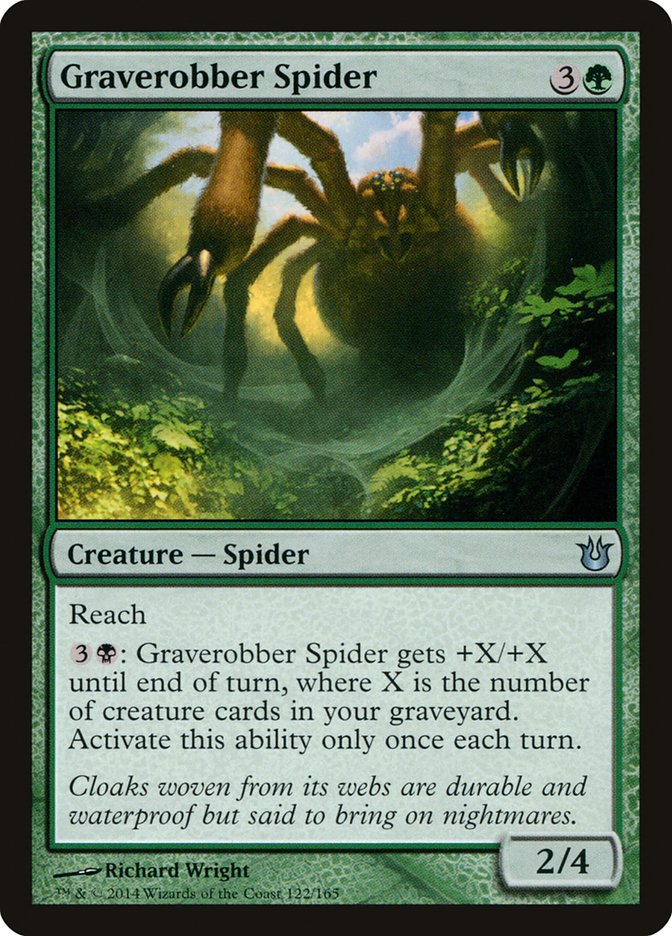With the Born of the Gods Prerelease behind us and release events ready to fire this weekend, it’s time to see what impact Born of the Gods is going to have on Magic. While it’s sure to shake things up in Standard, today I’d like to stick with what I know best and apply my knowledge of Limited to the new Draft format. Not too long ago, we drafted the pack from the new set third, meaning it only altered the basic draft strategy we were already be used to. Nowadays, with the new pack headlining the draft, it becomes the framework of our decks when added to the format.
I’m going to go color by color and map out the biggest ways that Born of the Gods is going to improve or detriment the color’s role in the format. Let’s start things off with the underdog from Theros.
Red
As triple Theros progressed as a format, people became more and more averse to drafting red decks. The main reason for this was the lack of strong red playables at common rarity. Additionally, the red commons all favored aggression and weren’t particularly powerful in that regard. Red didn’t have the best creatures, a strong heroic theme, or any bestow creatures worth gawking at. The one saving grace to the color was Lightning Strike, one of the best common removal spells in the set. Due to this, red could really only support one or two dedicated drafters in an eight-man pod.
So how does Born of the Gods change things for red?
The first two cards that caught my attention when looking through the red commons in Born of the Gods were Fall of the Hammer and Bolt of Keranos.
Now that’s a good start! Two more premium removal spells to complement Lightning Strike go a long way toward adding depth to red. Although both are a little less powerful than Lightning Strike, they’re cards that you’re going to want to play maindeck every time. Fall of the Hammer really impresses me as both an instant and a one-sided fight card.
Okay, so we’ve got some solid new removal for the red drafter. But what about the creatures?
The three best options at common are Pharagax Giant, Impetuous Sunchaser, and Kragma Butcher.
Of the three I like Kragma Butcher the best, but the other two aren’t far behind. All three continue to promote the aggressive red strategy that was founded in Theros, as they’re much stronger on offense than defense.
Kragma Butcher is just an all-around good creature that offers an undercosted 4/3 as long as you can get it through the red zone. Impetuous Sunchaser provides a really great target to throw Auras onto that alongside Two-Headed Cerberus gives red more opportunities to turn one creature into an unstoppable monster.
When it comes to Pharagax Giant, I’d like to look at it alongside Thunder Brute and Stoneshock Giant. All three of these cards offer red something similar: a top end to its curve. While in a vacuum Stoneshock Giant is the most powerful of the three, it didn’t really offer something red decks were looking for in Theros. Outside of the R/G Monsters archetype, most Theros red decks weren’t designed to reach eight mana and actually get the benefit of Stoneshock’s monstrous ability. While Thunder Brute and Pharagax Giant are less powerful, they still provide curve toppers for red but come with the added power of a relevant ability you don’t need to sink additional mana into.
Taking a look at the red uncommons in the set, the color got even more of a boost. We have another reasonable removal spell in the form of Searing Blood and a powerful bestow creature in the form of Everflame Eidolon. Not to mention red picked up one of the best sleeper uncommons in the set:
This card is way more powerful than it might first appear. Versatility is always a great thing for a card to have, and this one has it in spades. It provides a way to tap your inspired creatures, a removal spell when you need it, and a solid finisher all in one. Much like Fall of the Hammer, it even comes with the added benefit of being an instant. Although it’s not the type of card that gets better in multiples, the first copy has the potential to be the best card in your deck.
Overall, red definitely gets a big boost from Born of the Gods. The quality of its commons increases greatly, and it picks up the most removal of the five colors. While it still looks like most red decks are going to be primarily aggressive, the color should safely support another drafter.
Blue
Now that we’ve gotten the least powerful color from Theros out of the way, let’s look at one of the most powerful. Unlike red, blue had a fairly deep array of commons to choose from. Voyage’s End and Griptide were the two most reliable disruptive spells in the set, both able to reset heroic creatures no matter how out of hand they got. Toss in a great bestower (Nimbus Naiad), an aggressive flier (Vaporkin), and a bunch of powerful uncommons (Sea God’s Revenge / Horizon Scholar) and we can see why blue was such a force to be reckoned with in Theros. Additionally, blue decks covered many roles in Theros; they could supplement a heroic plan, play a strong tempo game with fliers, or provide the basis for a more controlling deck.
Does the rich get richer with Born of the Gods?
Just like with red, let’s start by looking at some of the commons. First up, we have the new piece of blue "removal":
Similar to Voyage’s End, Retraction Helix is perfect for disrupting heroic strategies. Although it is a little less consistent and doesn’t offer scry, it comes with the added bonus of being an inspired enabler. While that might not seem like much, it can really help set up a big blowout turn for the blue player.
Not exactly hard removal, but a good card nonetheless. Dedicated blue control and tempo decks will be glad to have this card on the team. Although the mana cost is a little restrictive, Nullify has value well past turn 2 if you can’t get the double blue online quickly.
Next let’s take a look at a few of blue’s common creatures:
Nothing too crazy here, although we have a few decent role players.
Chorus of the Tides is a fine card that is going to see as much Limited play as any other Snapping Drake would. The heroic ability doesn’t make it that much more valuable than the vanilla option, but it is free upside.
While Nyxborn Triton mirrors Nimbus Naiad in mana and bestow cost, it lacks a lot of the power its predecessor had. While still a good card in its own right, having a pack containing Nyxborn Tritions instead of Nimbus Naiads is going to hurt blue overall.
Sphinx’s Disciple also reminds me a lot of a Theros card: Prescient Chimera. Just like its chimeric brother, I don’t expect it to be a deck-defining card, but it can definitely fill in the role of a five-mana flier when needed.
The best common that blue picked up isn’t a removal spell or creature. I’m talking of course about everybody’s favorite draw spell:
Although not every blue deck is going to have time to cast this sorcery, it provides grindy blue decks with some much needed card advantage. Factor in that Born of the Gods comes with a lot more removal than Theros had in general and you’re going to be quite pleased to have some raw attrition on your side.
As for the blue uncommons, let’s start with the big man on campus:
Not too many uncommons say "win the game" quite like the blue archetype does. It makes all of your creatures unblockable while removing the evasive threats of opposing fliers. Take the reasonable 3/2 body into account and you’re looking at a really powerful card.
The other blue uncommons aren’t lacking in power level either. Siren of the Fanged Coast, Flitterstep Eidolon, and Oracle’s Insight are all strong cards that are going to put your opponent in some positions that are hard to come back from if they get to do their thing.
Overall, blue is going to see some changes with Born of the Gods. Although the color is still going to be very draftable, the blue commons this time around are a little less powerful than they were in Theros. However, the high power level of the uncommons should help counteract this. What this means is that more blue drafters are going to have to use the color for support rather than as the focal point of the deck.
Green
Next on the chopping block we have green. In Theros, green was a great color to draft. It had solid pseudo-removal in Sedge Scorpion and Time to Feed, not to mention Nessian Asp, which is one of the best creatures in the set. Leafcrown Dryad also gave green one of the best overall bestow creatures, and Voyaging Satyr helped push a lot of green decks into the fatty/ramp department. Why spend time building a huge creature using fragile Auras when you could just play a creature that’s already gigantic?
How will Born of the Gods alter green’s strength in Draft?
As per usual, let’s begin with the commons.
Right off the bat we see that green got the shaft when it comes to removal. The only thing even resembling it is Culling Mark. This card is so much worse than Time to Feed that it isn’t even funny. First off, there’s no upside of life gain. Second, not only do you need a creature bigger than the one you want to kill, but you have to attack with it and only it. Your opponent even gets the option to double block. Add in the fact that any creature with a tap ability is basically immune to this card and you’re looking at a strict downgrade for green.
In general, green commons didn’t do too great in the noncreature department:
Aspect of the Hydra is a Giant Growth with prerequisites. Whenever you get more than +3/+3, you probably have so much in play that you should be winning regardless of the extra pump.
Karametra’s Favor is okay. While it’s rarely going to be able to ramp you on turn 3, it does come with a few upsides, replacing itself being one of them. It also gets the job done as a heroic enabler and color fixer. Definitely not as good as Voyaging Satyr, but not the worst thing ever.
Although the green spells are a little weak this time around, the color isn’t exactly known for the strength of its spells. In the common creature department, Born of the Gods at least has some tools to offer:
I’ll be honest with you—none of these cards really holds a candle to Nessian Asp. To be fair, though, Nessian Asp is a grade A Limited Magic card, and you don’t need every creature to be as good as it to get the job done.
Snake of the Golden Grove comes close to the Asp, but not having reach is a huge strike against it. Expect this creature to always be a 4/4 that gains you four life unless your opponent is about to kill you and the extra power and toughness doesn’t matter anyway.
Swordwise Centaur is a solid aggressive two-drop. Although you’re getting a bit more stats than usual for two mana, it comes at the price of a tricky mana requirement. This could spell some trouble for G/W heroic decks looking to curve out with a turn 3 Wingsteed Rider.
Setessan Oathsworn is basically just an upgrade to Staunch-Hearted Warrior. With cards like these, getting them online as early as possible is much better than a small stat upgrade.
Pheres-Band Tromper is the creme of the crop for the green commons. I’m always a fan of reasonably stated creatures, and this one brings a Hill Giant’s body with some serious upside. As long as you can get it through the red zone once, this Centaur threatens to grow indefinitely and provide a threat that’s hard to answer and stays relevant at all stages of the game. As with green in Theros, this card represents some individual power without the need of Auras to make it relevant.
At the end of the day, the green commons are all decent but not mind blowing. Not bad, but a step down from green’s power level in Theros.
The green uncommons provide more of what green does best in the form of strong creatures.
Pheres-Band Raiders and Archetype of Endurance are both grindy curve toppers that make it very tough for your opponent to win the game. If you can get the Raiders rolling, a stream of 3/3s to accompany your 5/5 should be enough to close things out. As for the archetype, it’s going to be very hard for any opposing deck that relies on interaction to win once all of your creatures can’t be targeted by them.
Much like Giant Spider and Towering Indrik before it, Graverobber Spider has the base body required to make it a good card. Add in an extremely powerful activation and you’re looking at a high draft pick. Even decks that don’t end up playing black cards will want to try their hardest to work at least one black source into the deck just for this ability.
What green lacked in noncreature spells at common it makes up for in this one card. Raised by Wolves grants you a whopping six power and toughness for five mana with the added benefit of being spread out. As long as you don’t get blown out by a removal spell in response to casting this, it is going to go a long way toward helping you win the game. This card gets an A+ and is the best uncommon in green, not to mention one of the best uncommons in the whole set.
At the end of the day, green’s role isn’t going to be that different with Born of the Gods in the mix. Although it loses some of its edge at the common level, the creatures available are still strong enough to give the color a lot of play in Draft. If anything, without three packs to try to pick up Voyaging Satyrs, green decks might start to go lower on the curve than in triple Theros.
That wraps up the impact Born of the Gods is going to have on red, blue, and green in Limited. Next week I’ll finish things up with white and black, as well as take look at the handful of multicolored uncommons the set offers and their implications when drafting.

